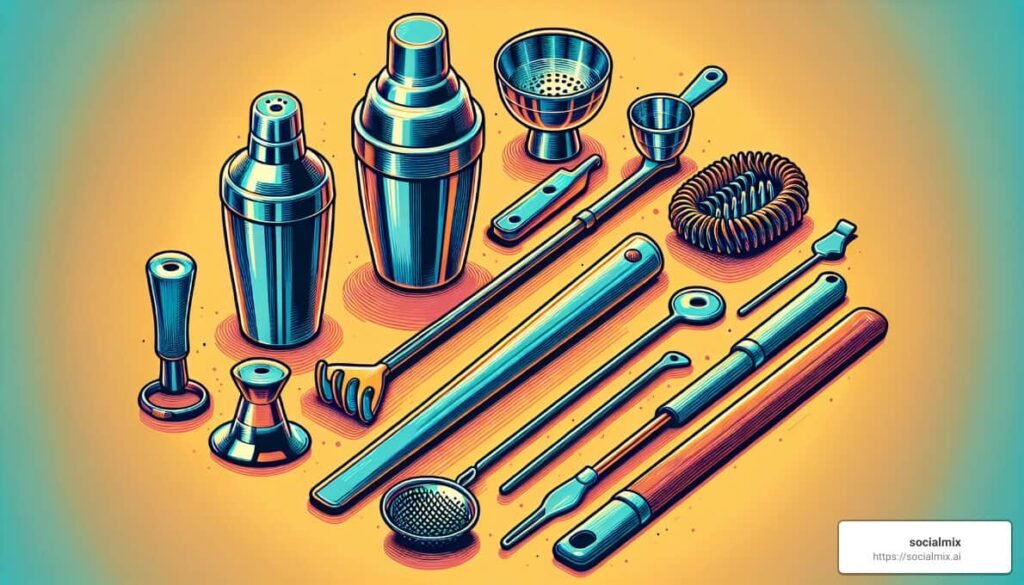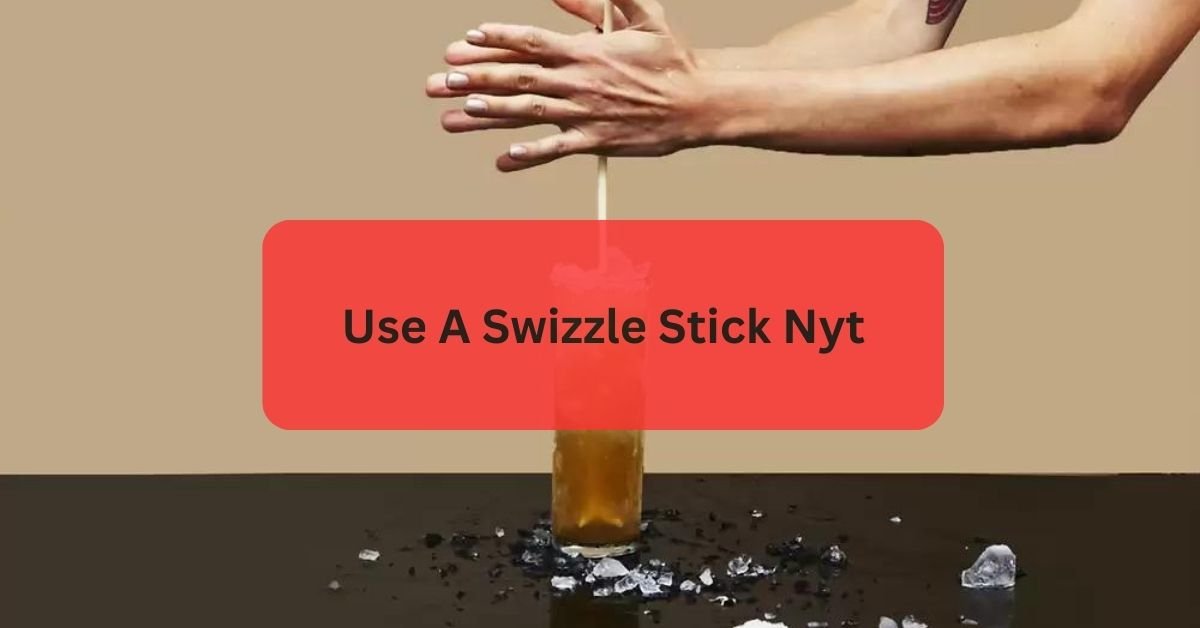The New York Times (NYT) crossword puzzles are popular for their clever and challenging clues. One such clue that often appears is the use of a swizzle stick NYT.
The answer to the New York Times crossword clue “use a swizzle stick NYT” is “STIR.” This refers to the action performed with a swizzle stick to mix drinks.
Let’s talk about the meaning of this clue, the answer, and its relevance.
The Crossword Clue Explained!
The phrase uses a swizzle stick NYT is a crossword clue that typically leads to a four-letter answer. In this context, the clue is asking for an action that one performs with a swizzle stick. The answer to this clue is STIR.
When you use a swizzle stick, you stir the drink to mix it well. This action ensures that all the ingredients in the drink are evenly blended. The word “stir” fits perfectly as it is a simple and common term used for this process. Understanding such straightforward clues can make solving crosswords easier and more enjoyable.
Why “STIR”?

Stirring is the primary function of a swizzle stick. When solving the crossword clue “**use a swizzle stick NYT**,” think about what action is performed with this tool. The word stir perfectly fits the description and the number of letters required by the puzzle.
Using a swizzle stick to stir ensures that all the ingredients in a drink are well-mixed, creating a balanced flavour. It’s a simple, common action associated with making cocktails.
Recognizing this straightforward action helps in quickly identifying the correct answer in the crossword puzzle.
Importance of Swizzle Sticks in Bartending!
Swizzle sticks play a crucial role in bartending. They ensure that all ingredients in a cocktail are evenly mixed, enhancing the drink’s flavour. Without proper stirring, some parts of the drink might be stronger or weaker than others, affecting the overall taste.
Swizzle sticks also help in mixing drinks gently without breaking the ice, which is important for maintaining the correct dilution and temperature of the cocktail.
Additionally, they can be used to create layered drinks, adding to the visual appeal. Overall, swizzle sticks are essential tools for bartenders to create well-balanced and visually appealing drinks.
Read: Borneo Travel Guide – Your Ultimate Travel Guide In 2024!
Using Swizzle Sticks in Crossword Puzzles!

Crossword puzzles often use everyday objects and actions as clues. The clue uses a swizzle stick NYT is a good example of this. It combines a common tool with a simple action, making it a clever and straightforward clue for solvers.
By using familiar items, crossword creators make the puzzles more relatable and enjoyable. This type of clue encourages solvers to think about ordinary actions in a different way.
Understanding how to decode these clues can improve your crossword-solving skills. It also makes the process of solving puzzles more engaging and fun.
How to Approach Such Clues?
When faced with a clue like “use a swizzle stick NYT,” break it down into parts:
Identify the tool: Swizzle stick. Think about where you’ve seen this tool and its use in everyday life, especially in bars or at parties.
Determine the action: What do you do with it? Stir. Consider the primary function of the tool, which is mixing drinks.
Fit the action into the crossword grid: STIR (four letters). Make sure the word fits the number of spaces provided in the crossword grid. Double-check the intersecting clues to ensure the word fits correctly.
Common Misconceptions:
Sometimes, solvers might overthink the clue use a swizzle stick NYT and look for complex answers. However, the simplest and most direct action is often the correct one. In this case, the straightforward answer is “stir.”
Variations of the Clue!

Crossword clues can have variations, but the core idea remains the same. Variations of the clue “use a swizzle stick NYT” might include:
- Mix with a swizzle stick
- Blend with a swizzle stick
- Stir with a swizzle stick
Why Do Crosswords Use Everyday Items?
Crosswords often incorporate everyday items and actions to make the puzzles relatable and enjoyable. Clues like using a swizzle stick NYT are familiar to most people, making the puzzle approachable while still providing a challenge. Using common objects helps solvers connect the clues to their daily experiences.
This familiarity makes the puzzles less intimidating and more fun to solve. Additionally, it can evoke a sense of satisfaction when solvers realize they know the answer based on simple, everyday knowledge. This approach helps both new and experienced solvers enjoy the puzzles.
Read: Black Travel Guide Magazine – Exploring The World!
FAQs:
Are there other possible answers to this clue?
No, “STIR” is the most accurate and fitting answer for the clue “use a swizzle stick NYT.” It perfectly captures the action involved in using a swizzle stick. Other terms may not align as well with the clue’s specific context.
How often does this clue appear in NYT crosswords?
This clue can appear occasionally, but it is not one of the most frequent clues. The frequency can vary depending on the puzzle’s theme and the crossword editor’s preferences. You might encounter it once in a while, but it’s not a staple of every crossword.
Can “use a swizzle stick NYT” have variations in the crossword?
Yes, variations might include phrases like “mix with a swizzle stick” or “blend with a swizzle stick.”
Conclusion:
The clue use a swizzle stick NYT in the New York Times crossword puzzle is a straightforward and clever one. The answer, “STIR,” reflects the primary action performed with a swizzle stick. Understanding such clues can enhance your crossword-solving skills and make the puzzles more enjoyable.
Remember, practice and familiarity with common clues are key to becoming a better crossword solver.
Read:




